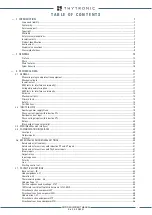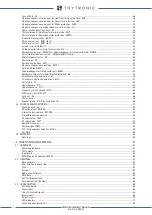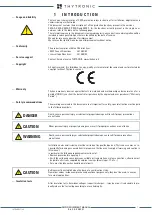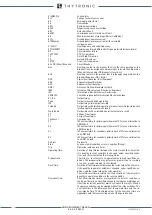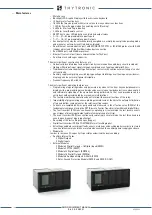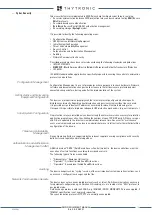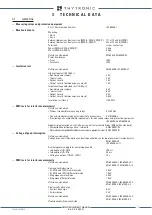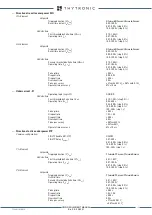
10
INTRODUCTION
51LR(48)/14
Locked rotor
51V
Voltage restraint overcurrent
55
Minimum power factor
59 Overvoltage
59N
Residual overvoltage
59V2
Negative sequence overvoltage
64F
Rotor Earth Fault
64REF
Low impedance restricted earth fault
66
Maximum number of startings (Restart inhibition)
67N
Ground directional overcurrent
67N(Comp)
Ground directional overcurrent with calculated
residual current
81O/81U
Overfrequency and underfrequency
87G-87M/87T
Double slope biased differential for generator/motor/transformer
BF
Circuit breaker failure
74CT-74VT
CT-VT supervision
78
Out of Step Protection
79
Automatic Recloser
74TCS
Trip circuit supervision
52 o CB (Circuit Breaker)
Circuit Breaker
52a
Auxiliary contact in the breaker that is in the same position as the
breaker. It can be assigned to a binary input to locate the CB position
(Breaker failure and/or CB diagnostic functions).
52b
Auxiliary contact in the breaker that is in the opposite position as the
breaker (52b open = CB closed)
DFR
Digital Fault Recorder (Oscillography)
SER
Sequential Event Recorder
SFR
Sequential Fault Recorder
ANSI
American National Standard Institute
IEEE
Institute of Electrical and Electronics Engineers
IEC
International Electrotechnical Commission
CENELEC
Comité Européen de Normalisation Electrotechnique
K1...Kx
Output relays
Pulse
Output relay with pulse operation
tTR
Output relay minimum pulse width
Latched
Output relay with latched operation (manual reset) Output relay with
latched operation (automatic reset)
No-latched
Output relay with no-latched operation (automatic reset)
VT
Voltage Transformer
CT
Current Transformer
ThySensor
Combo device
P1
IEC nomenclature for primary polarity mark of CTs (as an alternative to
a ANSI dot)
P2
IEC nomenclature for primary polarity mark of CTs (as an alternative to
a ANSI no-dot)
S1
IEC nomenclature for secondary polarity mark of CTs (as an alternative
to a ANSI dot)
S2
IEC nomenclature for secondary polarity mark of CTs (as an alternative
to a ANSI no-dot)
Self test
Diagnostic
Start
Leave an initial condition or reset condition (Pickup)
Trip
Operation (with operate time)
Operating time
Duration of time interval between the instant when the characteri-
stic quantity in reset condition is changed, under specified condi-
tions, and the instant when the relay operates
Dropout ratio
The ratio of a reset value to an operate value in well-specified con-
ditions. The dropout ratio may be lower or greater than 1 according
as an over or under element is considered
Reset time
Duration of the time interval between the instant when the characte-
ristic quantity in operate condition is changed, under specified con-
ditions, and the instant when the relay operates.
The stated reset time is related to a step variation of characteristic
quantity in operate condition to the reset condition.
Overshoot time
The critical impulse time for a relay which is in its reset condition, is
the longest duration a specified change in the input energizing quan-
tities (characteristic quantity), which will cause the relay to change
to operate condition, can be applied without the relay switches. The
overshoot time is the difference from the operate time and the cri-
tical impulse time. The declared values for the overshoot time are
applicable with the lower setting value of the operation time.
XMR-D EQUIPMENT MANUAL
Ed. 2.9 - 02/2021



